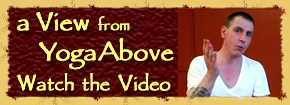
TEACHING METHODOLOGY
• Focus on design and delivery skills for safe
& effective practice and teaching
• Sequencing flows for varying effects and fitness
levels
• Demonstrating & multitasking
• Incorporating hands-on assists & modifications
• Precision and clarity in languaging and effective
cuing
• Designing for mixed level classes
• Leading vs. Teaching
• How to teach new postures to beginners
• Finding personal style
• Assessing individual needs
• Adapting and Responding
• Experiential language
ANATOMY & PHYSIOLOGY
Learn anatomy of the moving body - key bones and muscles
and understand the nervous system from a Western and
Eastern perspective and understanding the differences
• Introduction to Anatomy - Organs & Systems
of the Body, Skeletal System, Physiology of bone
• Joints - Movements, Restrictions, Muscular System,
Physiology, Postural Muscles
• Muscular System - Muscles for Movement and Alignment
in Asana
• Respiratory System - Respiratory Physiology,
Respiratory Muscles, Cardiovascular System Overview,
Blood Pressure and Asana
• Nervous System - Central Control and Autonomic
Influences through Yoga, Interaction with Yogic (subtle)
Physiology
• Physiology of Asana, Breath & Mediation
• Avoiding common Injuries in Yogic Practices
• Benefits & Contraindications for all Techniques
- Warning Signs
• Physiology of Stress
PHILOSOPHY/LIFESTYLE AND ETHICS
FOR YOGA TEACHER
An understanding of the evolution of yoga through the
millennia aids tremendously in understanding the contemporary
practice. Yoga has had a varied and colorful history
and has influenced and been influenced by wide-ranging
philosophies and world-views. No less colorful are the
people who have practiced and taught yoga from Siva
and Patanjali to the "yoga celebrities" of
the 21st century.
This course provides an overview of the historical and
philosophical roots of yoga through looking at some
of the major texts such as Patanjali's Yoga Sutras and
the Bhagavad Gita. As much of the practice of yoga is
based on its own unique philosophy, knowledge of yoga
philosophy and how it is relevant to practice is essential
for the modern yoga teacher, bringing richness and depth
to your teaching. We also look at modern trends and
developments in yoga and how it has evolved since its
introduction to the West.
Vipassana Meditation
Vipassana is a way of self-transformation through self-observation. It focuses on the deep interconnection between mind and body, which can be experienced directly by disciplined attention to the physical sensations that form the life of the body, and that continuously interconnect and condition the life of the mind.
This will be taught through:
• Self Observation
• Practice
• Noble silence
• Meditation and Self Discipline
SANSKRIT - The Ancient Language
of Yoga
Learn the stories behind the names of the poses as you
learn to properly pronounce their Sanskrit names.
PRACTICUM
There is no one way to teach yoga. The instructions
you learn will evolve through your own experiences and
the shared experiences of your group. Just as yoga students
learn in different ways, so do yoga teachers. Thus,
the Yoga Teacher Training is a blend of interactive
discussions, hands-on teaching, active analysis of yoga
classes, and multimedia presentations. You will practice
teaching in small groups, practice designing & teaching
of two 60-minute classes and giving and receiving of
feedback. Our Yoga Teacher Training Program will also
provide you with ample opportunity to observe and assist
students while teachers are teaching.
PROFESSIONAL PRACTICE
Being a yoga teacher is far more than teaching classes.
It's about how you present yourself energetically to
your classes and in your life. Developing ethical business
skills, intentions, setting up a schedule of classes
or studio, marketing yourself, legal, insurance, indemnity
& liability.
Course
Intention:
Whatever your reason for taking this teacher training:
to be a yoga teacher or increase your understanding
of yoga, it is my intention to build confidence with
your own knowledge and understand your own practice
and your practice of teaching. Having the utmost confidence
with yourself and be able to radiate that and teach
that with all that you do. Cultivating the wisdom and
understanding of yoga which we know is well of opportunity.




